The First Web 2.0 Conference in 2004
I tune into the 2004 Web 2.0 Conference and learn about network effects and data sharecroppers. Meanwhile, I conduct my first major interview as a tech blogger.
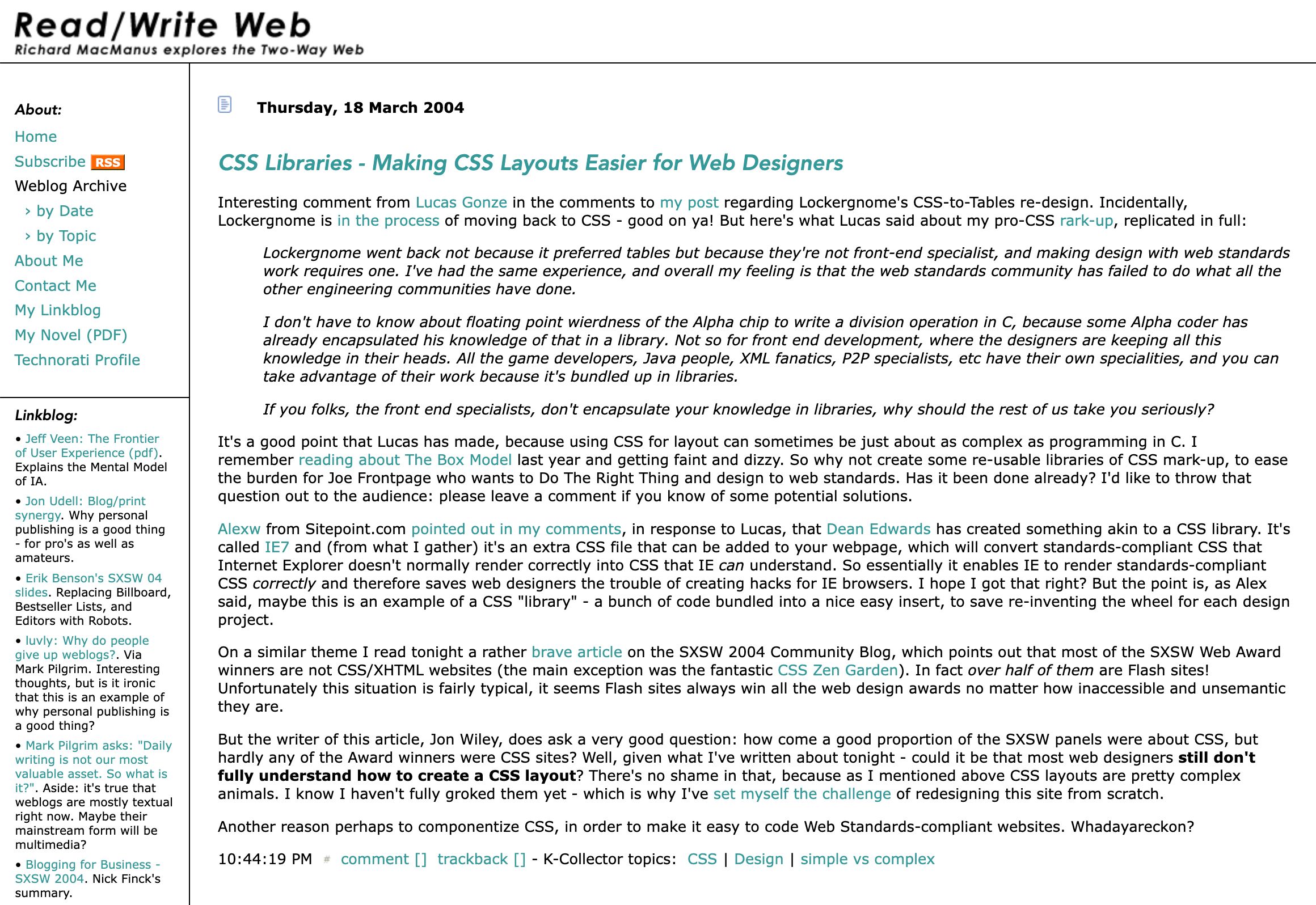
In-between trying to get linked to by an A-Lister in the blogosphere, I inadvertently turned myself into a journalist. In March 2004, I interviewed Marc Canter, a Silicon Valley resident who was internet famous in the 1980s. Twenty years prior, he’d co-founded MacroMind — a company that created multimedia software for the Apple Macintosh. Through a series of corporate maneuvers I didn’t understand at the time of the interview, by 1992 MacroMind had morphed into Macromedia. By that point, Canter had departed the company, but he’d be forever linked to Macromedia’s subsequent Dot Com success.
During our phone call, I was won over by Canter’s loquacious charm and you can tell from my writeup that I was under his spell. I badly wanted to believe his tales of multimedia rock n’ roll parties in the 1980s — the blaring music, huge video projectors, beer in the bathtub, smoke-filled hotel suites, and rented Cadillacs. His constant name-dropping and preposterous comparisons (he likened early MacroMind to the 1962 Beatles in Hamburg) only served to fire up my imagination even more about Silicon Valley.
I was also attracted to his talk about bootstrapping a cool startup and what it took to get such a company off the ground. “Every time I'd go do a demo or a speech somewhere,” he told me about the first years of MacroMind, “I’d bring a couple of cases of software and I'd sell it at the back of the room.”
I was a nobody living in a small country on the opposite side of the world, who was just interested in learning what was next in internet technology. Yet here I was talking to a Silicon Valley pioneer who had created and sold software products in the 1980s. I was a little starstruck, but also my fragile ego had just gotten a boost by this man’s interest in me and my blog.
The resulting post was the first of mine to get a ton of traffic, after making the front pages of both Slashdot and Boing Boing, two of the leading aggregators of tech news at the time.
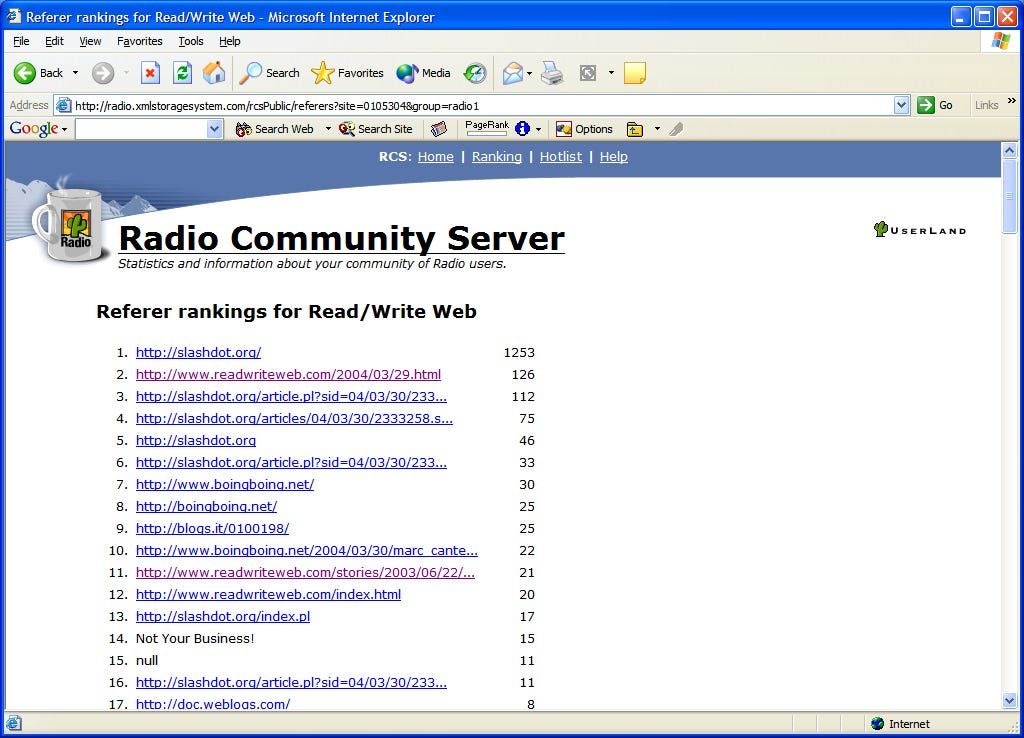
It also resulted in my first article in a noted print publication. I sent it to the New Zealand version of Computerworld and it turned up on page 16 of the April 19th edition. I was too excited to notice that my name wasn’t even on the article! Nevertheless, I took it as a meaningful accomplishment in my young career as a tech blogger. “I'm an amateur journo (sometimes) and a professional web craftsman (all the time),” I blogged after.
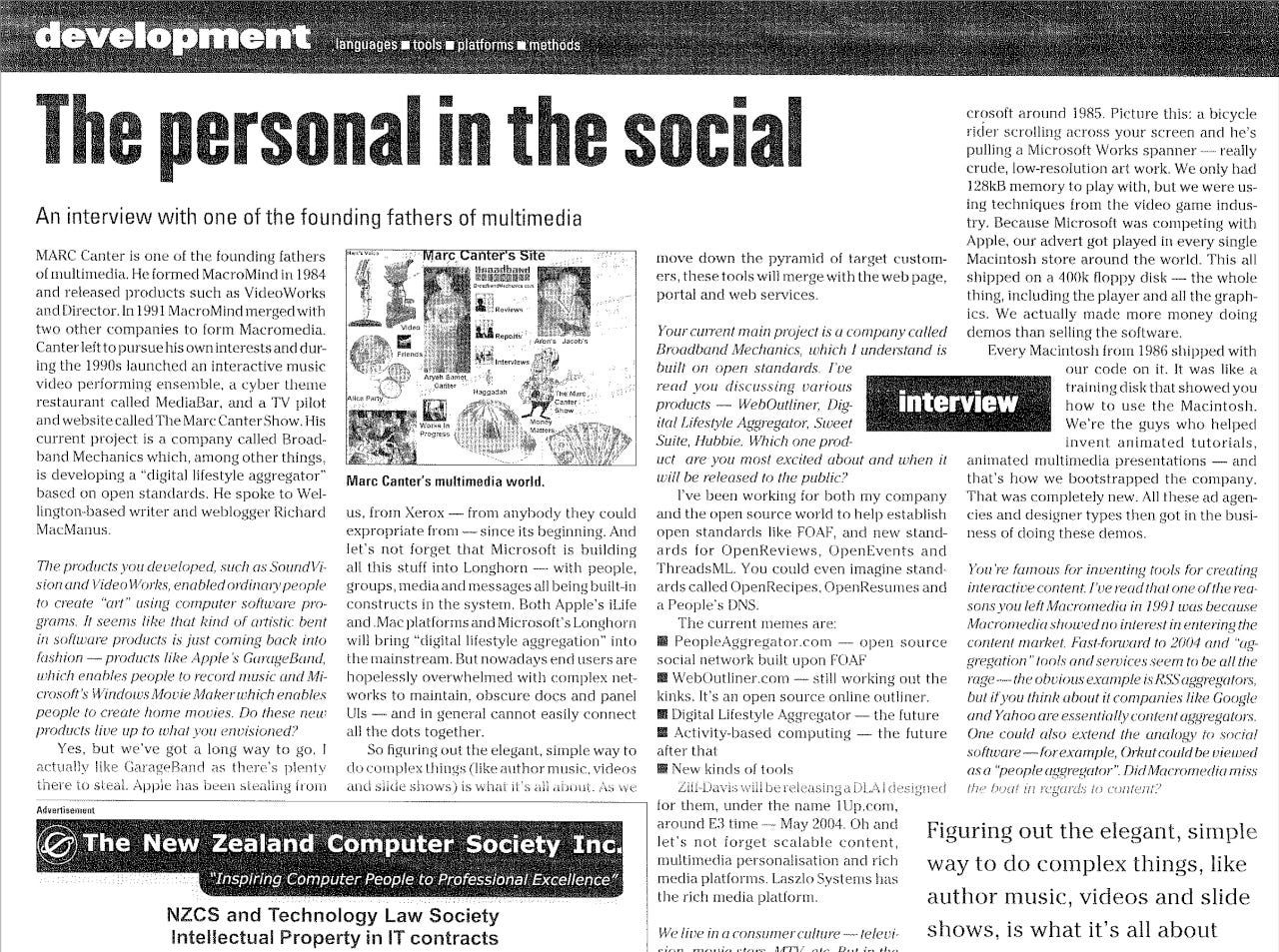
There’s no getting around the fact that I was incredibly naive in 2004, though. It took me several years until I understood what Canter was doing back then. Even though he was an outsider in Silicon Valley at that time — no longer in Marc Andreessen’s league as a startup success — he was striving to make himself relevant again. He was a professional insider, using his Silicon Valley history to lure in n00bs like me with his backstory. He exaggerated his past, making it more romantic than it probably was, and glossed over his mistakes.
The reality, as I discovered later, was that Canter had lost all his money in the 1990s. He had taken VC money for MacroMind in 1988, from the legendary venture capital firm Kleiner Perkins Caufield & Byers, and the plan was to do an IPO in 1991. But he was kicked out of the company in 1991, and the IPO plans were then turned into convenient mergers. Canter had been handsomely paid off, but he blew it all over the rest of the 1990s on failed interactive TV startups and parties.
So at the time I interviewed him, Marc Canter was effectively starting from scratch in this new “social web” era and working hard to re-capture his past Silicon Valley success. His latest company was called Broadband Mechanics and it was building a product called PeopleAggregator, which Canter styled as a “digital lifestyle aggregator” (DLA). Naturally, he wanted attention for this new product, and he’d figured out that telling his story to bloggers was a way to get it in this new era.
The Slashdotting was great for Canter, but it was also great for me. My blog was suddenly on the map with Slashdot readers, of which there were a large number back in 2004. So there was a symbiosis to our relationship as blogger and entrepreneur, which I hadn’t fully realized until the Slashdotting resulted in big page views and an increase in subscribers.
I met Canter in person the following year, during my first trip to the US. He was 48 at the time, a large man (over six foot and overweight), mostly bald and wearing a goatee and glasses. He favored bright Hawaiian shirts — daisy chain yellows, electric purples, metallic pinks, tiger oranges — and was just as colorful in conversation. But for all his bluster and stories from the glory days of multimedia, he was also a family man — on his second marriage and with young kids. It made me wonder what was it like to have a meteoric rise in the startup industry when you’re young, but then lose it all and have to scrabble to adapt when you’re older. It was the flip side to the Marc Andreessen story, who had the meteoric rise, but then just kept rising.
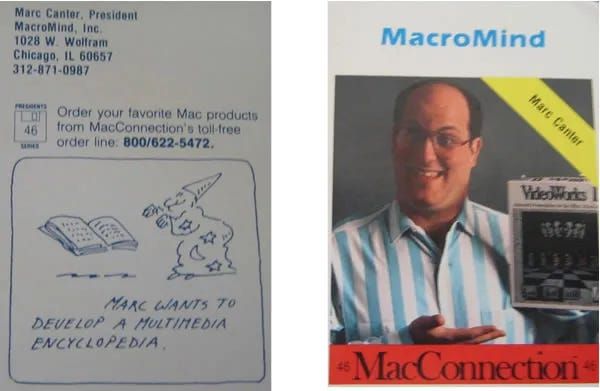
Only now, writing this book as a middle-aged man myself, can I truly empathize with what Marc Canter was going through in 2004. His story during Web 2.0 is just as much a part of Silicon Valley as the young rockstar founder story that both he and Andreessen lived in the 80s and 90s, respectively. Nowadays, we’d say that Canter in middle age still had the hustle and was dedicated to the startup grind, but I don’t think that quite captures what was going on when I met him. He was on the outer then, the same as me. But together, we could maybe get into the inner circle. He innately understood this, but I was just learning it.
In July 2004, the computer book publisher Tim O’Reilly made a keynote speech at that year’s Open Source Convention (Oscon), in Portland, Oregon. I listened to it while I was sitting at my desk in a Wellington city office building, via a podcast site called IT Conversations. O’Reilly had built up a successful publishing and conference business since the 1980s, which his own website describes as “providing the picks and shovels of learning to the Silicon Valley gold rush.” As a tech analyst, he was someone I could relate to, since he too had an arts degree — although his was from Harvard, not Wellington.
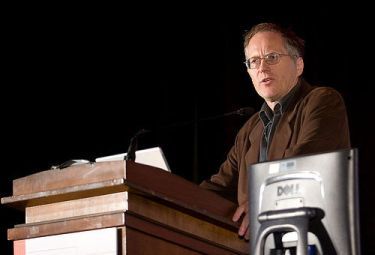
O’Reilly, who had just turned 50 in 2004, had been doing talks like this for years. His modus operandi as an analyst was to closely track what developers were doing and build theories based on their activity. His favorite quote, which he repeated in every talk he did during the upcoming social web era (or at least it seemed that way to me), was from the cyberpunk author William Gibson: “The future is here, it’s just not evenly distributed yet.” This was aspirational for O’Reilly, who had taken it upon himself to distribute the future — via books and conferences — that he saw developers building.
But even Tim O’Reilly couldn’t have known how right he would be when he told the Oscon 2004 audience, “many of you are doing things that are going to be embraced by millions of people two or three years from now, or five years from now, or 10 years from now.”
The phrase “network effects” was repeated multiple times during his talk; he pointed to Amazon, Google and eBay as companies that had already built large networks in their respective niches and thus had “opportunities for data lock-in.” Even the newly launched Gmail was ripe for network effects. However, O’Reilly had a warning. “The real big issue about Gmail is who's going to own that data,” he said. He knew damn well that centralization is the natural corollary to network effects, and that this could lead to the kind of monopoly behavior that Microsoft was infamous for during the first web era. So he laid down a challenge to the developers in the audience: create open source peer-to-peer applications. “We have to Napsterize the address book and the calendar, we have to figure out how to make these things peer-to-peer applications, so that we own the data.”

Of course, it didn’t turn out that way. We don’t own our social network data nowadays, nor do we own “our data about who we communicate with and why,” as O’Reilly had hoped for in 2004. Was he naive to think this was possible back then? Well, his job was to inspire developers and get them to buy his books. He could only lead them to the open source P2P water well — it was up to them to drink from it.
There was no mention of the term “Web 2.0” during O’Reilly’s Oscon keynote, but around June 2004 his company had begun to advertise its newest event, the Web 2.0 Conference, to be held in San Francisco in early October. The target audience for this was not developers, but businesspeople and investors. The theme would be “the Web as Platform” and the speaker list (which was overwhelmingly white and male) included Marc Andreessen, Amazon founder Jeff Bezos, and a host of Silicon Valley VCs.
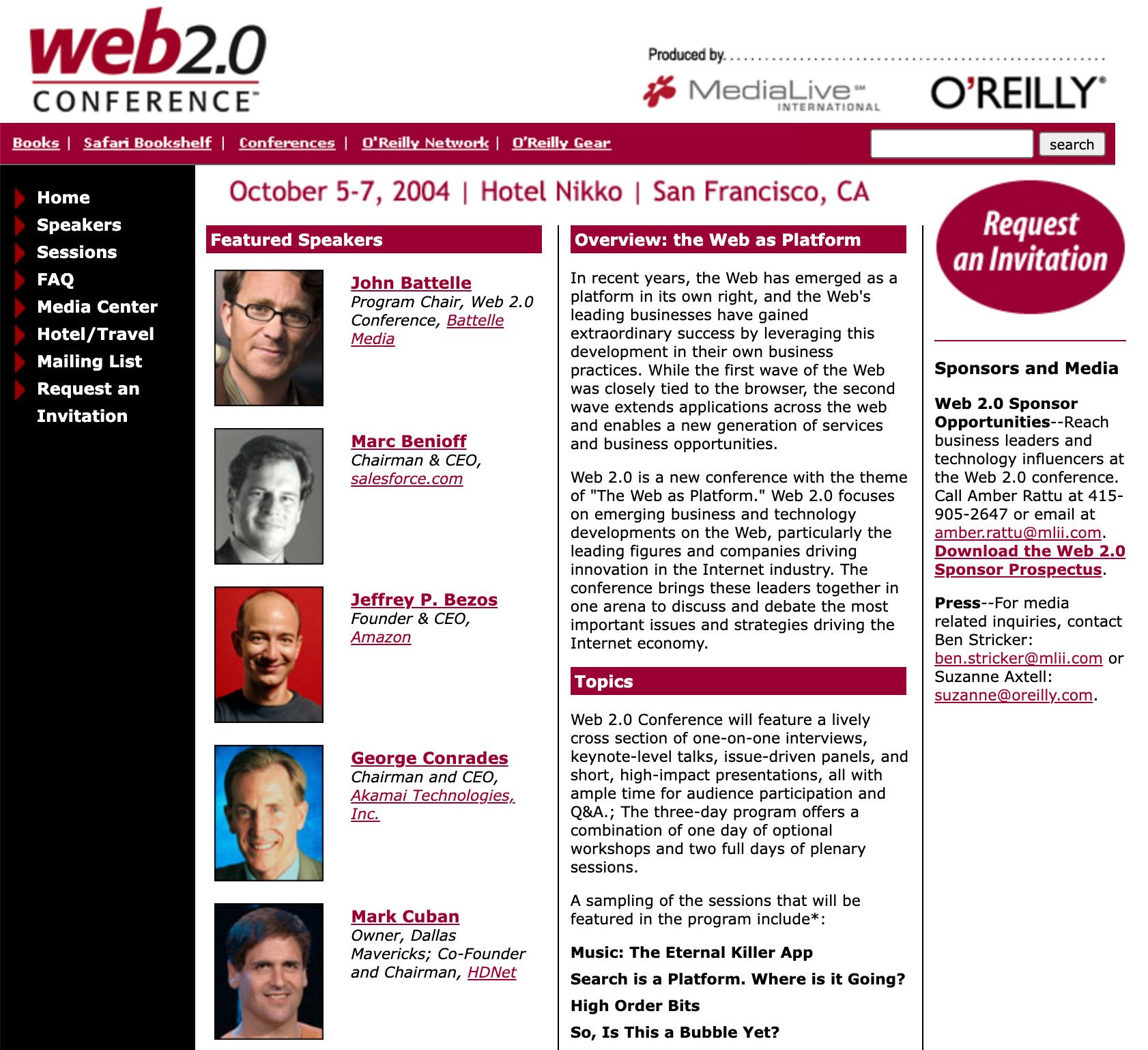
By the time October 2004 rolled around, there had been a marked shift in O’Reilly’s attitude to network effects. The Web 2.0 Conference was, of course, where the term “Web 2.0” was introduced; and given the audience, it quickly became a capitalistic rallying cry for the internet industry. So now, network effects were being embraced — not challenged, as in Oscon 2004. It was suddenly business time, not a time for open source advocacy.
In the conference opening, co-chair John Battelle (a media operator in his late 30’s who I would later do business with) talked about the opportunities in the new web era. He referenced one of O’Reilly’s current theories, the “architecture of participation,” explaining that it was “this idea of building your business by letting your customers build your business.” This was another way of saying that a startup could build network effects with user-generated content, which formed what O’Reilly (who loved to dream up new terms) called “collective intelligence.” Battelle pointed to Amazon, Google and eBay — the same few companies O’Reilly had mentioned at Oscon, but this time flipped to be examples that entrepreneurs should strive to emulate.
It was striking how much the tone had changed in the two months between Oscon 2004 in late-July and the first Web 2.0 Conference in early October. Now it wasn’t about challenging the network effects of companies like Amazon and Google, it was about “harnessing” network effects for your own business purposes. Perhaps the Google IPO, which took place in August — in-between Oscon and the Web 2.0 Conference — was the catalyst for this shift in emphasis, from Napsterizing the web to commercializing it instead.
Marc Andreessen’s panel, held on the first day of the conference, was entitled “Lessons Learned, Future Predicted.” This was just a couple of months after Andreessen had quietly founded his latest startup, Ning, which would be attempting to achieve network effects in the “social apps” market. In the session, Andreessen made no mention of having started something new; he was content to reminisce about the past, talk smack about Microsoft, and make generic predictions about the future (as he did regularly in media interviews). He was at this event to network with other entrepreneurs, perhaps raise some VC money, and pick up clues for success in this new web era. He wasn’t here to talk his next book.
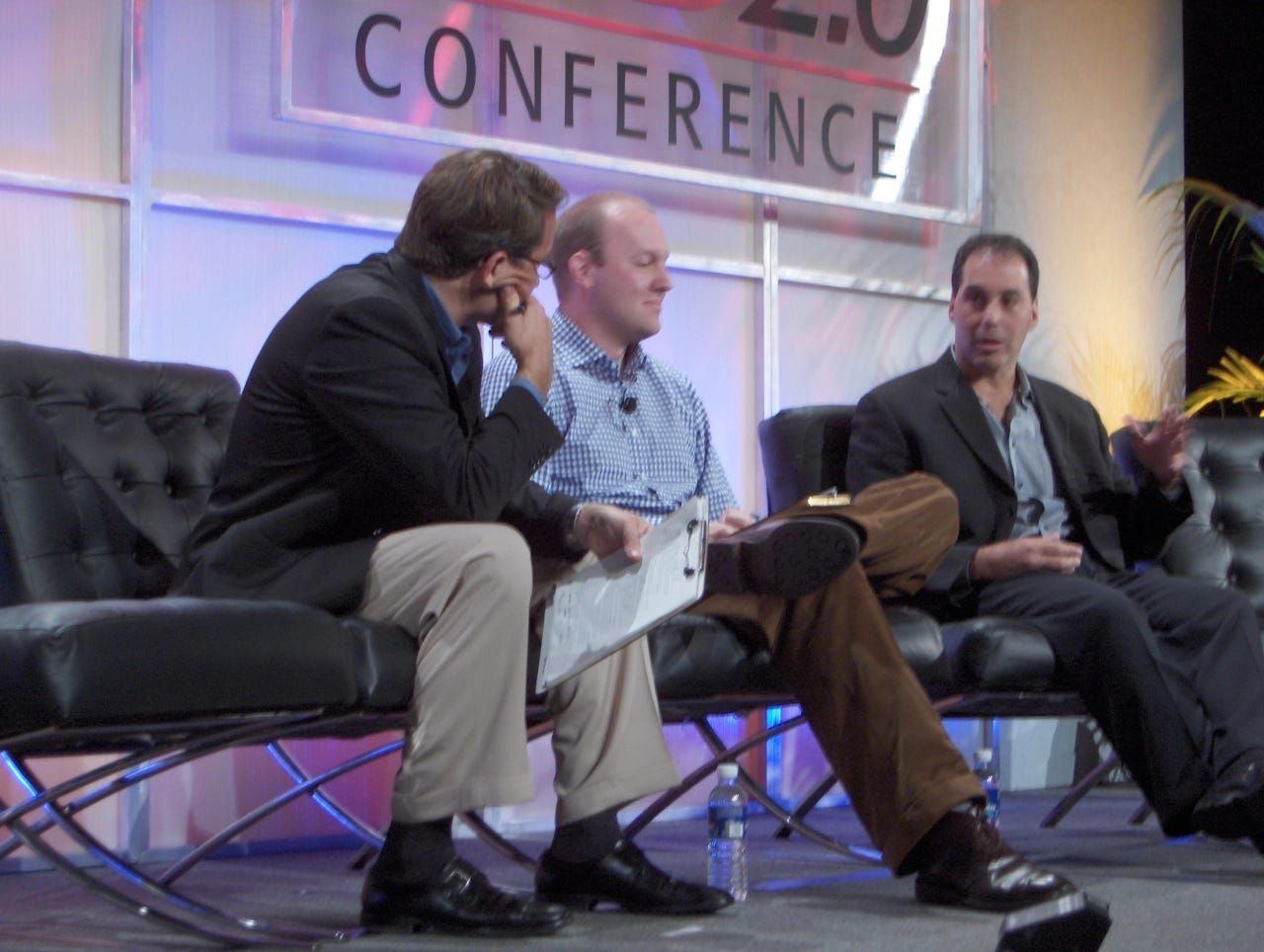
Nevertheless, it quickly became clear that Andreessen intended to get in on this new network effects gold rush. He acknowledged that software was increasingly open source and that “the new lock-in is clearly data.” He compared the new crop of data-oriented tech companies — Amazon, Google, eBay — to the “walled gardens” of the Dot Com era, such as AOL and Compuserve.
Andreessen’s assessment of the current internet business scene was that it was based on “eBay envy.” It’s easy to forget now, but in 2004 eBay was seen as a better business than both Amazon and Google. Its market cap was $77 billion at that time, larger than Amazon ($18B) and Google ($23B) combined. Google, fresh off its IPO, was undoubtedly the sexier business, but eBay was the one everyone wanted to emulate.
“eBay built an enormous business around network effects by having the data lock-in,” said Andreessen, explaining that you can't get your reputation data, purchase history or store data out of eBay. “There are APIs and they let you do certain things, but it's all very carefully controlled and sort of a plantation owner / sharecropper kind of relationship,” he concluded.
Even in 2004, many years before cancel culture, the plantation owner analogy was a risky one to use when talking to an audience of mostly white males. One of the other speakers, Dan Rosensweig of Yahoo, quipped that he couldn’t be a plantation owner because he was a “northeastern liberal Jew,” which elicited a round of laughter from the audience.
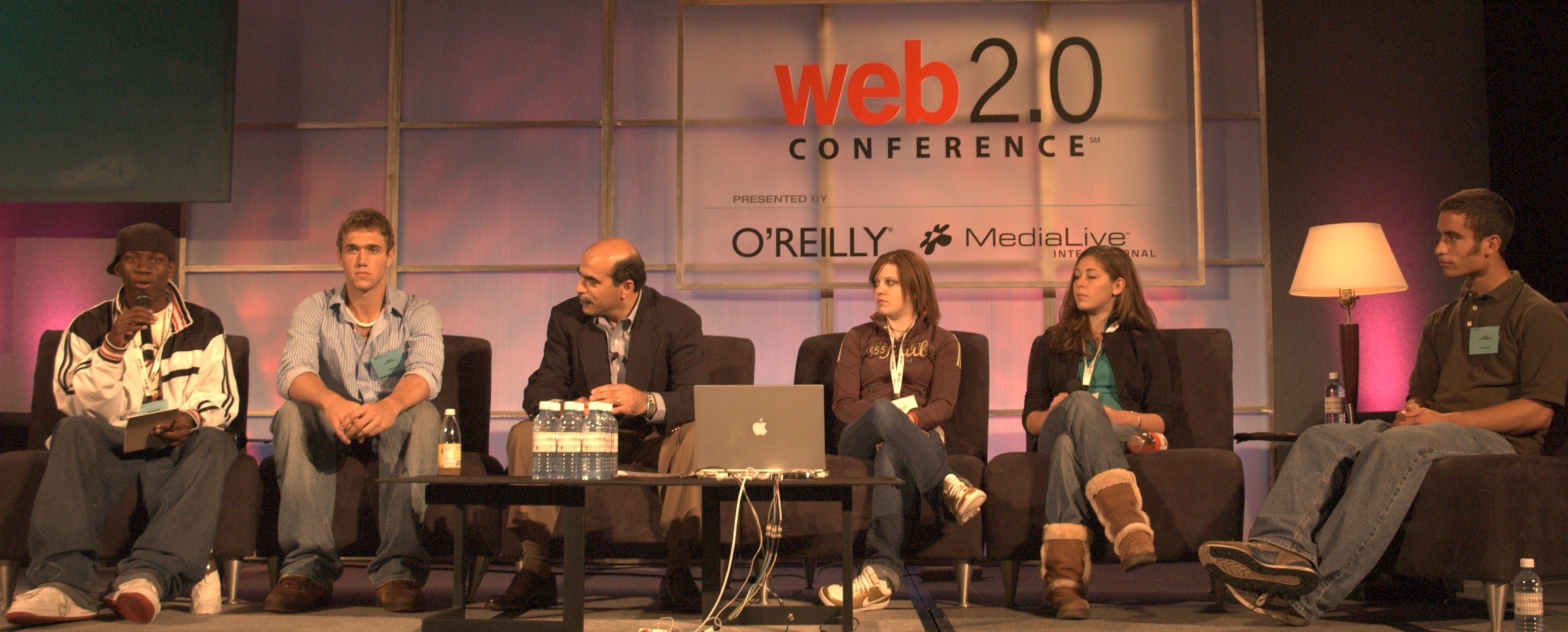
Dodgy analogies aside, it was clear Andreessen aspired to become a data plantation owner for this new era. “It makes total sense from a business standpoint,” he said, before conceding that “it is a form of proprietary lock-in that is at least as strong as the form of lock-in that people used to have at the software layer.”
He also sounded a warning that many people forgot about in the years to come, but would prove fatefully accurate. He pointed out that even a small startup that had an open policy on data now — as an example, he mentioned the trendy bookmarking service del.icio.us — could easily change its terms and conditions later, or implement technical restrictions that make it difficult to move your data. So even a company founded on the idea of open data could lock it down at any time (and indeed, this is basically what happened with Twitter in the early 2010s).
Andreessen’s final comment in the Web 2.0 panel was to answer a question from the audience, from none other than Marc Canter, my new blog buddy. He wanted to know if Andreessen would put his financial support behind open data standards like FOAF (the “Friend of a Friend” protocol). It’s not about the money, replied Andreessen. “The day the major social networking sites actually start to support it,” he said, referring to FOAF, “it'll have some relevance.” But, he added ominously, “there's nothing that can be done to coerce those companies into supporting it, other than end-user demand.”
Lead image: Read/Write Web, 25 March 2004 (just before Marc Canter interview).
This post is part of my serialized book, Bubble Blog: From Outsider to Insider in Silicon Valley's Web 2.0 Revolution. View table of contents.
Next up: 004. A Call With Tim O'Reilly
Buy the Book
My Web 2.0 memoir, Bubble Blog: From Outsider to Insider in Silicon Valley's Web 2.0 Revolution, is now available to purchase:
- Paperback, US$19.99: Amazon; Bookshop.org
- eBook, US$9.99: Amazon Kindle Store; Apple Books; Google Play
Or search for "Bubble Blog MacManus" on your local online bookstore.